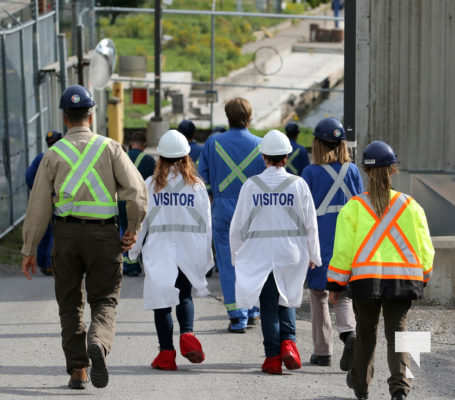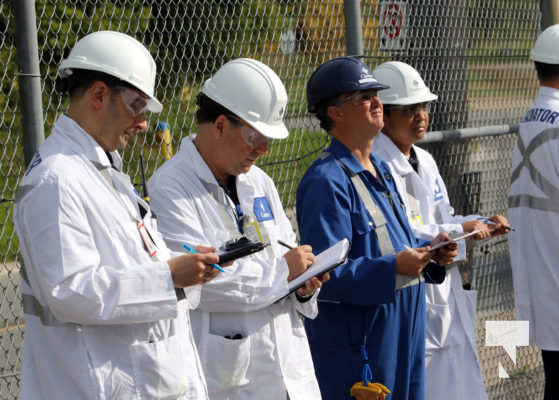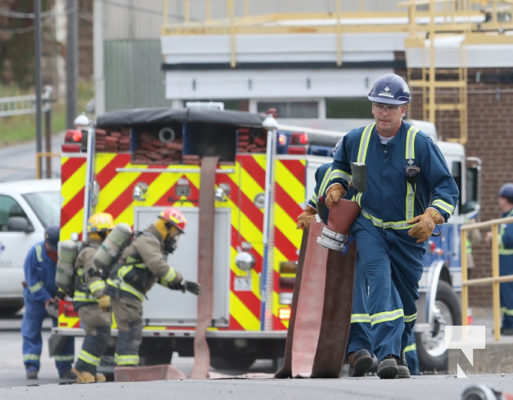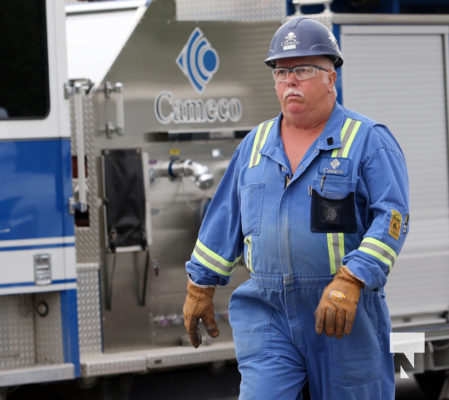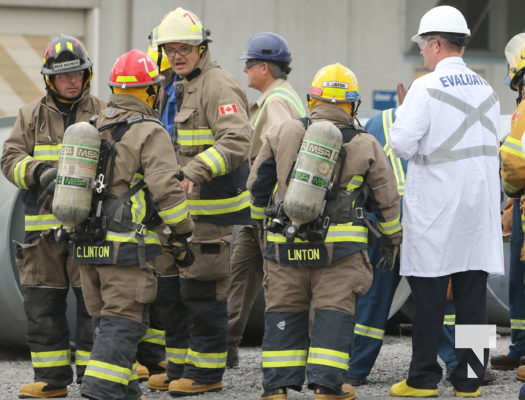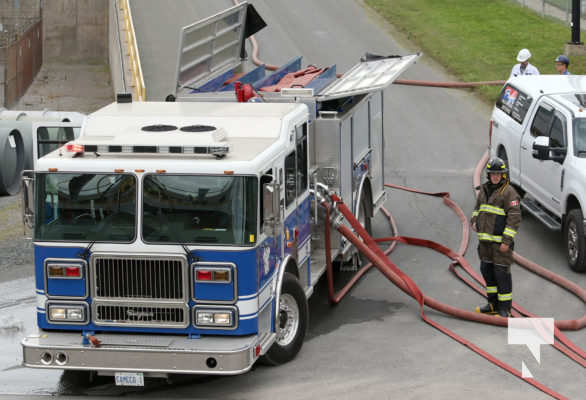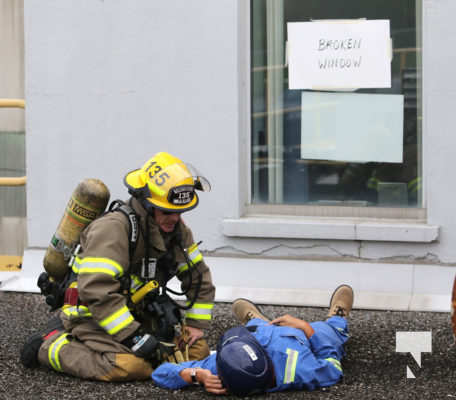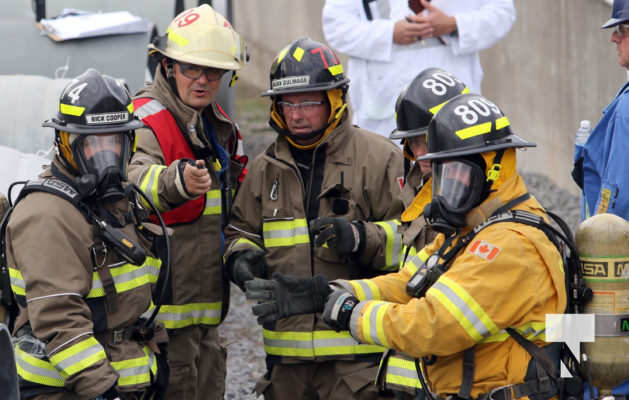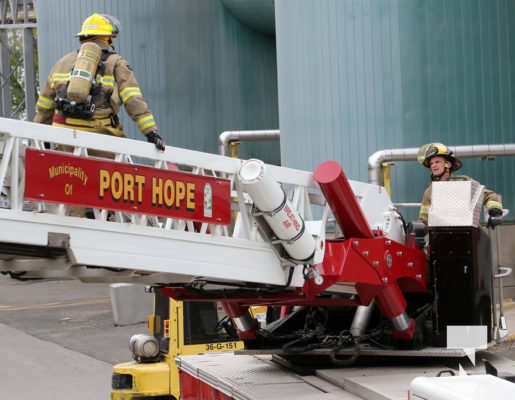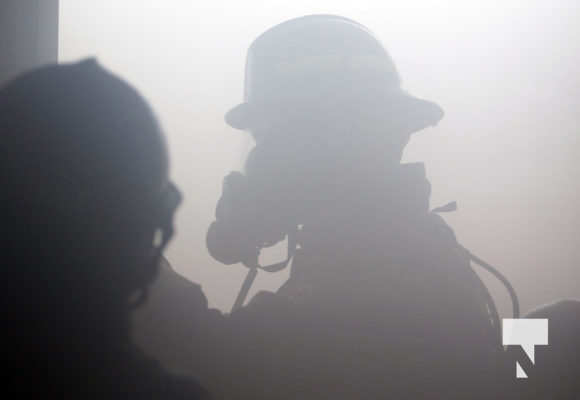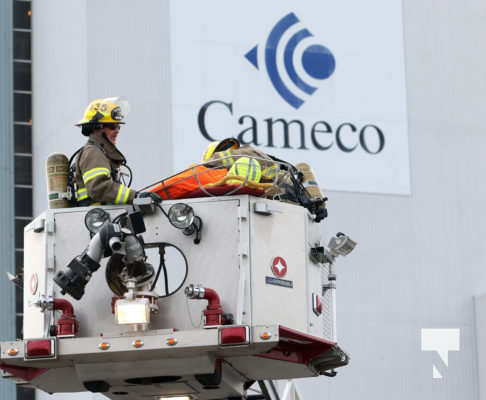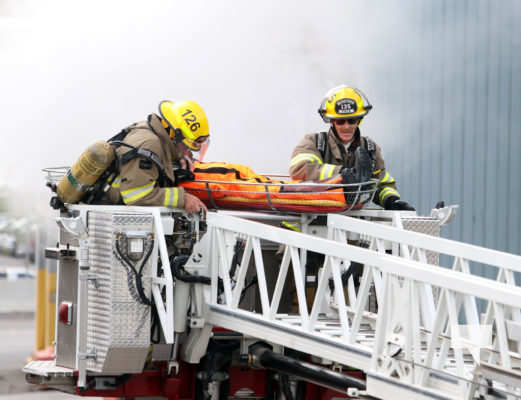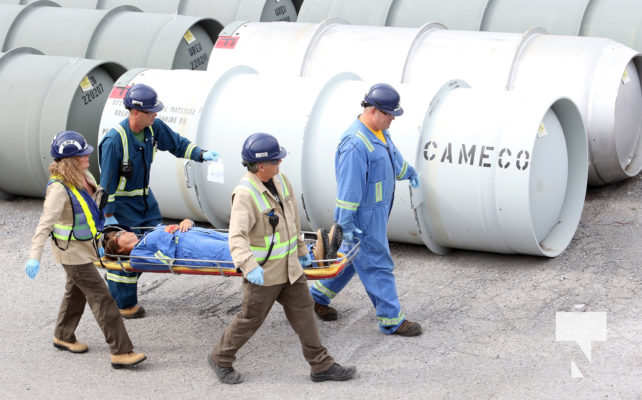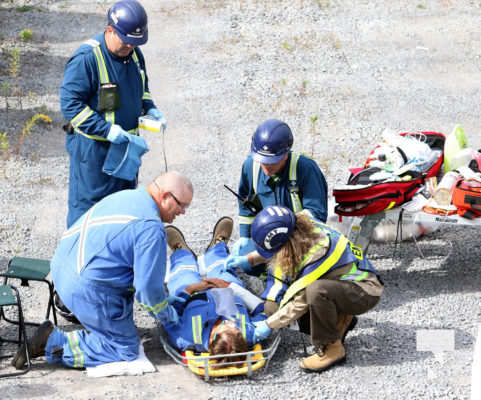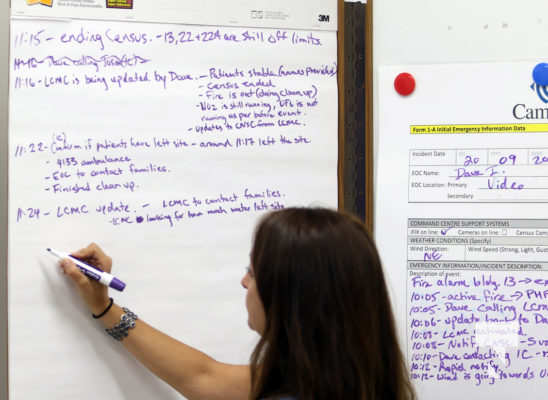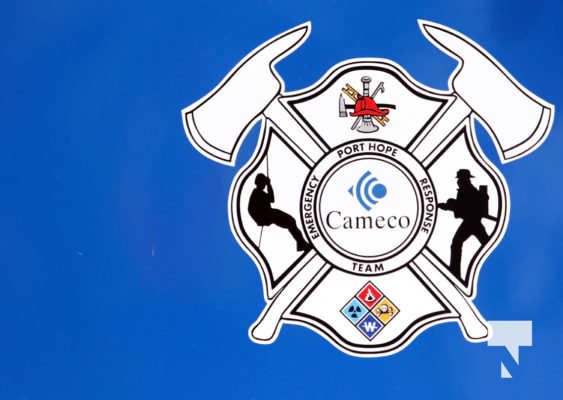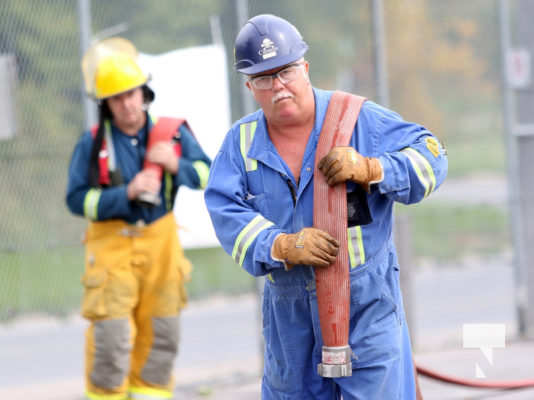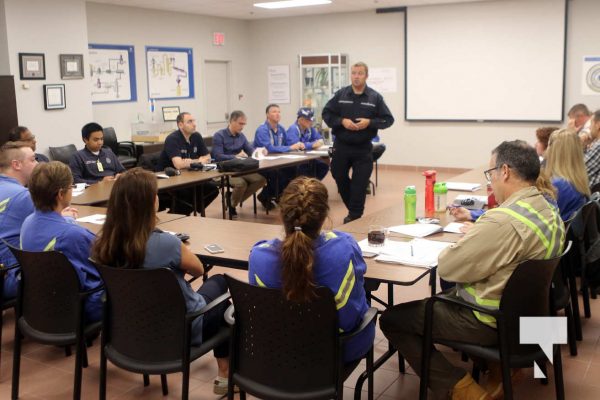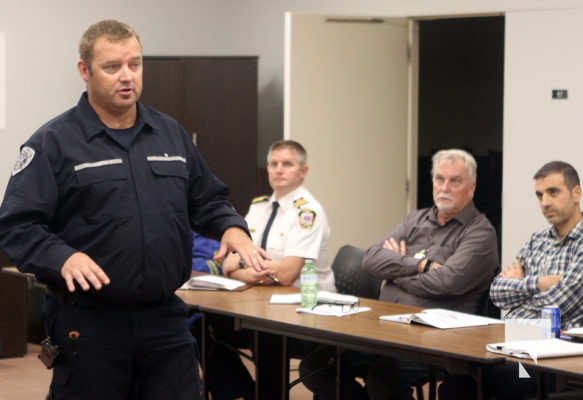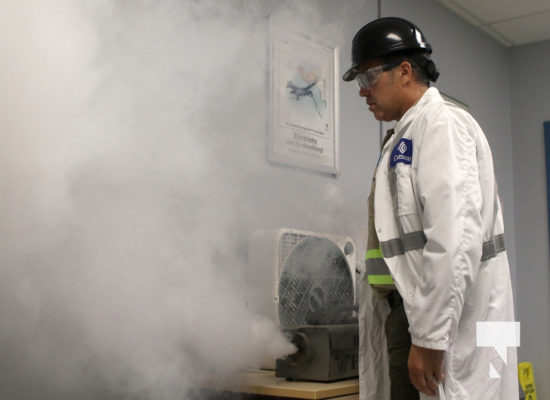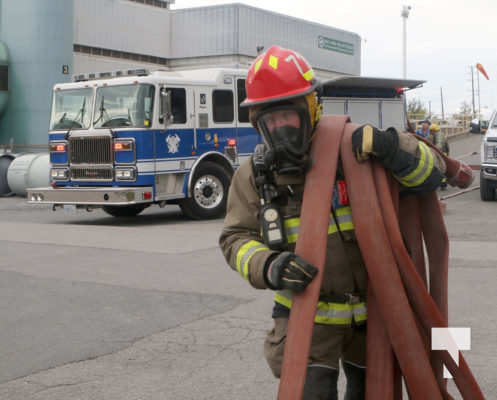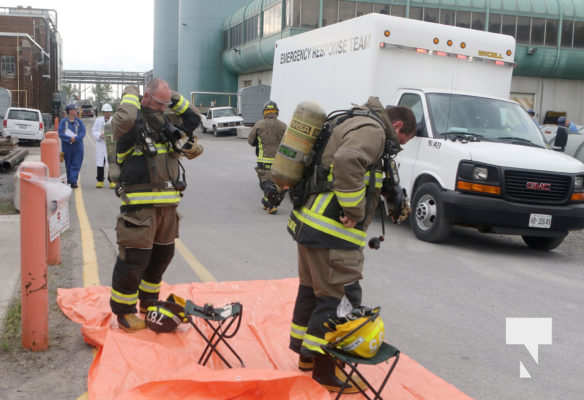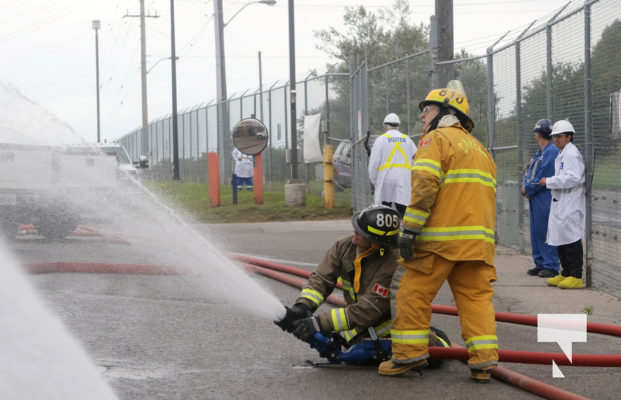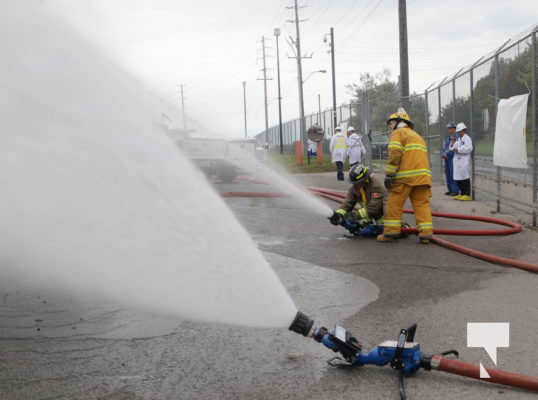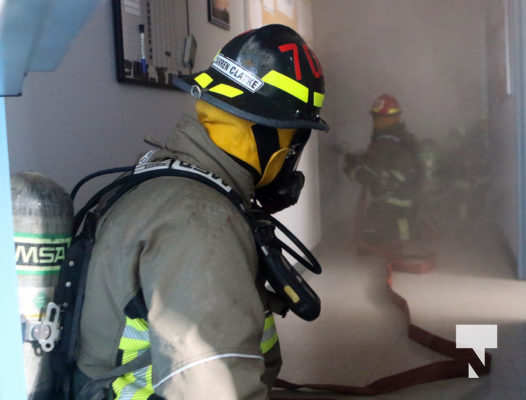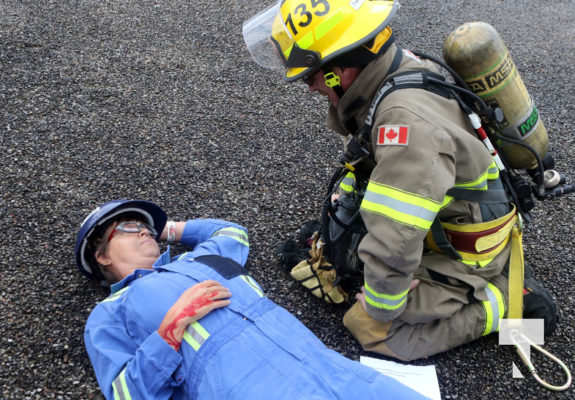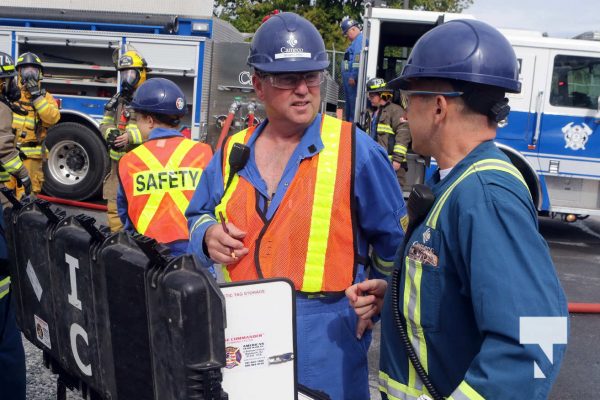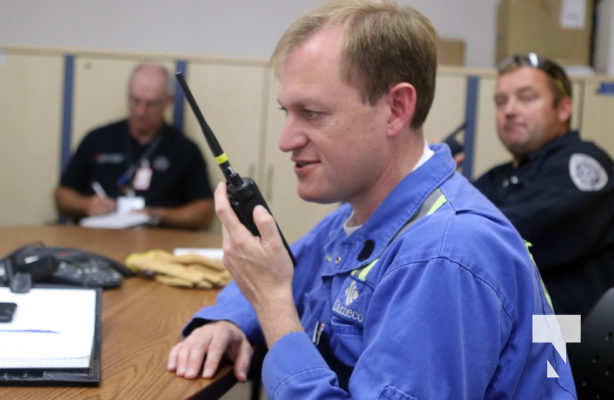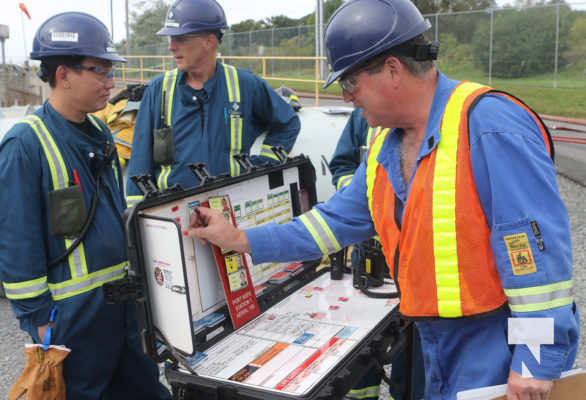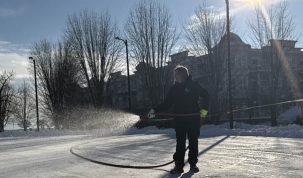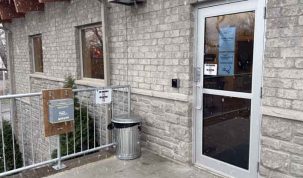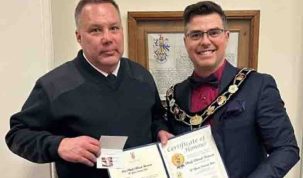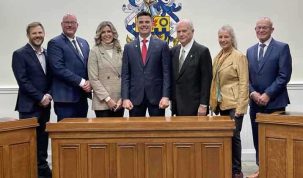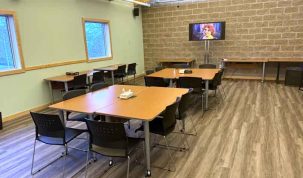Cameco held a full scale mock exercise in their facility in Port Hope on Thursday, September 20, 2018.
The exercise was called, “Save The Books” and it involved members of Cameco’s Emergency Response Team along with members of the Port Hope Fire Department, said Brian Bernard Coordinator, Fire Protection & Security Cameco Port Hope Conversion Facility.
Part of Cameco’s emergency response is the facility has have to have a fire response needs analysis done for the site every three years.
“We do multiple drills every year but this is what we would call a full multi-organizational drill.”
The joint operations was held with members of the Port Hope Fire Department and other agencies along with local crisis team who supports our Emergency Operations Centre.
“Overall it was an excellent exercise that test our emergency response team,” said Bernard.
“It was a complex drill. And was great work between Port Hope Fire Department and Cameco.”
In an effort to make the exercise as real as possible, simulated smoke was used in the area along with specialized lighting to indicate where the fire was located.
Two people suffered (simulated) injuries. One person made it out of the building, but collapsed on the roof due to (simulated) smoke inhalation. Using their platform firetruck, Port Hope firefighters lowered the victim to safety where they were treated by Cameco’s medical team.
Another person had to be rescued by ERT (Emergency Response Team members of Cameco) along with Port Hope firefighters inside the building.
Bernard said in an emergency, first responders at Cameco and generally in most fire departments follow what’s known as a PEP rule which means People, Environment and Property.
“We teach our people that rule never changes.”
Cameco is regulated through the Canadian Nuclear Safety Commission that states a full scale mock emergency must be done every three years.
This was the first time a fire was the scenario because fire is not the biggest hazard at the plant.
“Over the last few years we’ve really focused on containing hydrofluoric acid or ammonia which we have on site. But since we’ve basically been told by the regulators that they are very happy with our responses and are confident in our skills, they requested us to do a fire this time.”
The scenario took months to prepare and during the de-briefing, first responders were candid about what went right, and what could have been done better.
“The one thing Cameco does and they are very good at is they are very open and honest, but that’s how we get better.”
“That’s how we continuely strive to be the safest operating plant of this nature.”
“We take it very seriously. Public safety and our safety is key and the only way you get there is by critiquing yourself and improving.”


